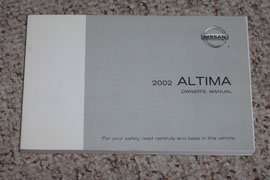Nissan-Overview and History
Nissan motor corporation, shortened to Nissan, is a Japanese multinational manufacturer of automobiles. Its headquarters is in Yokohama, Japan. It sells its automobile under brand names, including Nissan, Datsun, and Infiniti. At the same time, its brand that produces in-house performance tuning products is Nismo.
The Company is hailed for being one of the pioneers in the automobile industry. Their first vehicle was manufactured in Japan, later expanded to America, and now it has manufacturing facilities worldwide.
They have a pervasive history that traces back to 1933. Now it produces several vehicles, including cars, SUVs, and forklifts among others. People commend Nissan for making quality vehicles with a hint of modern technology, performance, styling, and safety.
Do you wonder how this company expanded worldwide in such a short period? This article will break down the historical timeline of Nissan.
The Origin of the Datsun brand:
In 1914, Masujiro Hashimoto founded Kaishinsho Motor Corporation, which produced its first car, DAT 1914. DAT was an acronym for the company’s investors’ name. In 1918, the name was changed to Kaishinsha motor car corporation and again to DAT 1925. This company produced trucks and passenger cars; their first trucks were made for the military market.
The First World War affected their production as they had to quit commercial operations to contribute to the war effort. The company merged with Jitsuyo Jidosha Corporation In 1926 and became DAT Jidosha Seize Co. Ltd.
DAT came up with a smaller car, Datson type 11, that endorsed DAT as its parent. The company was moved to Yokohama in 1933.

The Origin:
The name Nissan was an abbreviation on the Tokyo Stock Exchange for Nihon Sangyo; it originated in 1928. At that time, Nissan participated in auto parts production but not automobile manufacturing.
DAT Jidosha Seizo merged with Robata casting in 1933. It was the beginning of Nissan’s automobile manufacturing.
Nissan Motor Organization:
A few years after the merger, the Datsun 15 rolled out of the manufacturing inventories. It was available in different models, including many pick-ups, phaeton, and delivery vans. Datson was the first time some Japanese vehicle was mass-produced because of its unique automotive style. In later years, they produced the Datsun 1200 sedan, Nissan skyline, and a few other Datson models that paved the way emergence of Nissan in the United States.
From Japan to America:
The first Nissan car rolled out in the Yokohama headquarters in 1935. It was not until the 1950s that Nissan showcased its first Datsun at the Los Angeles auto show. It began Nissan in America, as they opened their manufacturing facility in Mexico in 1966. By 1983, Nissan had its manufacturing facility in Taiwan, Australia, and Smyrna, Tennessee.
Next few decades:
Nissan motor corporation was established in California when Datsun’s first sports car, SPL 201, was introduced. It was a four-seater with a soft top 4-speed transmission and a powerful 48-horsepower engine. By the end of this decade, Nissan had a strong reputation in the Japanese and American automobile markets. Datsun 2000 roadster became the trademark of Nissan design, and the Datson Z changed the perception. In 1969, 240Z hit the market, which was a huge hit.
In 1971, the company generated around 1/4 of a million sales in the United States. It also produced Datson 510 and 240Z on two continents, winning different championships. The year 1973 it sold its one-millionth vehicle in America.
In 1975, Datson became the top automobile importer in the United States.
In the following decade, they manufactured their first truck in The United States. It established more manufacturing facilities in the United States by the end of the 1980s to meet the rising demands.
In the last years of the 20th century, Nissan moved in unique directions retaining the typical heritage. It received an environmental award from EPA in the same decade. The Altima made its debut in 1992; Nissan hit new milestones in this decade with skyrocketing sales.
The Beginning of the 21st century:
Nissan doubled the models it offered and hence its sales in the first decade of the 21st century. The new lineup included full-size trucks that had hybrid technology. The Z also reappeared in the market with greater power.
It produced a V8-powered pick-up available in a king cab and Crew Cab. The famous models Maxima, Sentra, Quest, Altima, Versa Sedan, and Versa Hatchback are loaded with technological features. The Company accommodated a Nissan Owner’s Manual in the vehicle price to ensure that the vehicle owner is aware of the proper operations and maintenance protocols.
Today:
Nissan is the leader in the electric automotive industry, as it released the all-electric Leaf with great safety technology in 2010. They are likely to hit a century of production in the coming years, and the thrill surrounding the Nissan automobiles is not fading because of their innovative approach.

